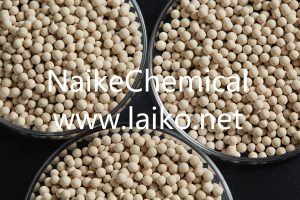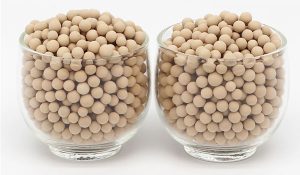What Are the Routine Preparations Required When Using Activated Alumina?
Activated alumina is mainly used as an adsorbent in industrial applications such as gas drying, liquid drying, water purification, selective adsorption, and decomposition processes in the petroleum industry. Due to its strong affinity for water, activated alumina has been widely used in gas drying. The main gases that can be dried using activated alumina are acetylene, cracking gas, coke oven gas, hydrogen, oxygen, air, ethane, hydrogen chloride, propane, ammonia, ethylene, hydrogen sulfide, propylene, argon, methane, sulfur dioxide, carbon dioxide, helium, nitrogen, and chlorine. As activated alumina releases a large amount of heat when adsorbing water, its drying capability, speed, heat transfer, and regeneration design should be comprehensively considered during its application. Sometimes, we need to carry out some routine processing to make its performance more stable. What are the aspects of routine processing? How should we operate in this regard?
Activated alumina filtration
Use porous activated alumina filter media to intercept and adsorb small impurities in water, and further clarify them after coagulation and precipitation to make the water clarity reach the standard for drinking water.
Activated alumina coagulation and precipitation
The object of coagulation and precipitation treatment is mainly the turbidity of water. The treatment method is to add chemical agents to raw water for coagulation to form flocculants that are easy to precipitate for the suspended solids and colloidal impurities in water, and then precipitate them in the activated alumina settling tank to make the water clear. The clarification tank is a structure that integrates coagulation and precipitation processes.
Activated alumina disinfection
The purpose of disinfection treatment is to kill pathogenic bacteria in water. The general method is to add a certain amount of chlorine or bleaching powder to achieve the purpose of disinfection after an appropriate contact time.
Activated alumina routine processing includes filtration, coagulation and precipitation, and disinfection. For our use, we can start from these three aspects to operate. The above steps of this method are also introduced in the article, and it is hoped that all practitioners can operate according to regulations.
Activated alumina has a strong surface activity, strong adsorption, and good thermal stability, and is widely used in industrial production. To use it normally, it is necessary to understand the key points of activated alumina carriers. High-performance activated alumina balls have more advantages in amorphous refractories, mainly improving the corresponding density, improving flowability, strength, and secondary mullite production, reducing moisture and porosity, and playing the role of drying agent, mainly for water absorption, drying speed, and regeneration performance. Therefore, in order to better play its performance, it is necessary to understand the performance of activated alumina balls, such as mechanical strength, good chemical reaction requirements, good surface structure, pore structure, surface area, grain size, etc., which have played a good role in chemical reactions.



